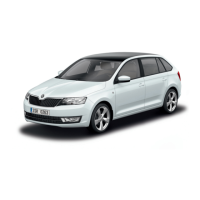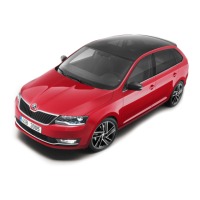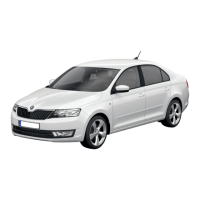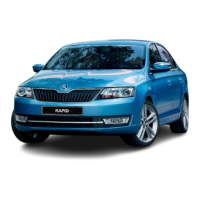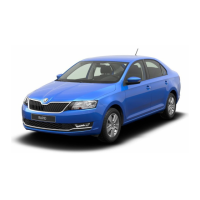CAUTION
The objects shown in the display can be closer or even further away than they
appear. This is especially the case in the following situations.
■
Protruding objects, such as the rear of a truck and the like.
■
When driving from a horizontal surface into a slope or a depression.
■
When driving from a slope or a depression onto a horizontal surface.
Speed control system
Introduction
This chapter contains information on the following subjects:
Operation 103
Operation description
104
The Cruise Control System (CCS) maintains a set speed without you having to
actuate the accelerator pedal. The status where the CCS maintains the speed
is referred to hereinafter as the control.
WARNING
■
The general information relating to the use of assistance systems must
be observed » page 96, in section Introduction.
■
After pressing the clutch pedal, no interrupted control occurs! For exam-
ple, if a different gear is engaged and the clutch pedal is released, control is
continued.
Operation
Fig. 123 MAXI DOT display: Examples of status displays the CCS
Fig. 124 Segment display: Examples of status displays the CCS
Read and observe on page 103 first.
CCS status displays » Fig. 123, » Fig. 124
Speed set, but control is inactive.
Control is active.
No speed set.
System fault - seek assistance from a specialist garage immediately.
Basic requirements for starting the control
The CCS is activated.
On vehicles with a manual transmission, the second gear or higher is en-
gaged.
On vehicles with an automatic transmission, the selector lever is in the
D/S position or in the Tiptronic position.
The current speed is higher than 20 km/h.
This, however, is only possible to the extent permitted by the engine output
and braking power of the vehicle.
WARNING
If the engine output or engine braking effect is insufficient to maintain the
set speed, the driver must assume control of the accelerator and brake
pedals!
103
Assist systems

